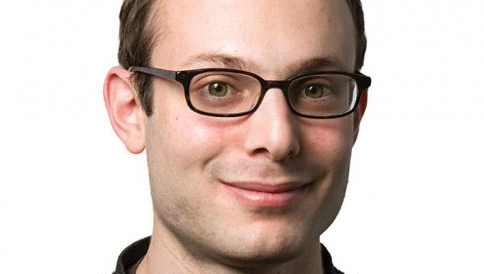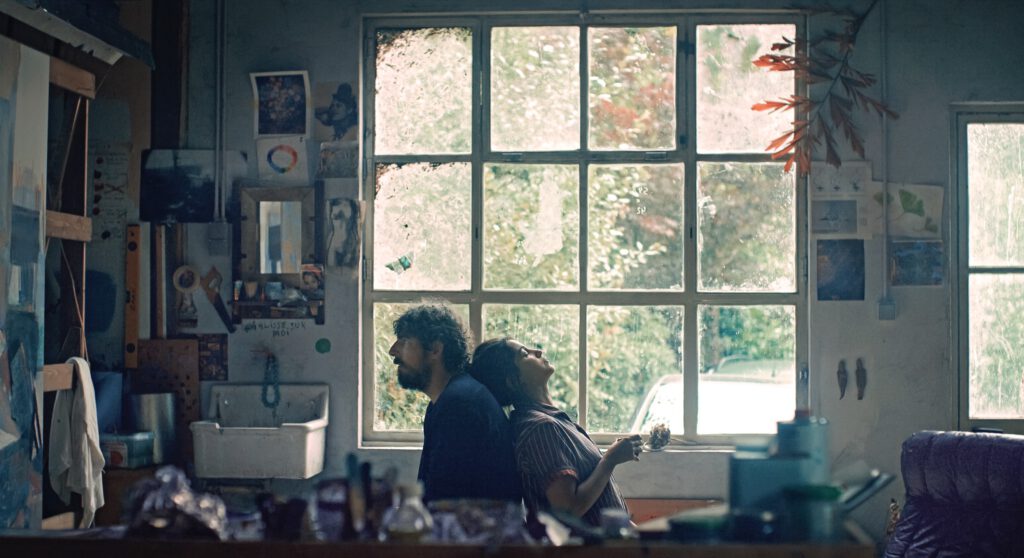With 24 features, the 2021 Cannes competition is the largest since 1995 (recent years have hovered around 20), and Palme d’Or aspirants kept premiering right until the end. None of the last four films to debut strikes me as a serious contender for the top prize, to be announced Saturday night Cannes time, but you never know.
Of the final four, Joachim Lafosse’s “The Restless” was probably the strongest—a slow-burn portrait of a painter and father with bipolar disorder. Stylistically, the film is so placid and uninflected that I spent much of the first hour wondering when something significant was going to happen. I thought of a great exhibit I saw at the Block Museum at Northwestern University more than a decade ago on Hitchcock’s collaborators. In a memo to a screenwriter, Hitchcock said he worried that the draft in question had too many “no-scene” scenes, which he defined as something like scenes that didn’t advance the film.
“The Restless” played like a film of “no-scene” scenes. But in fact, small gradations of behavior throughout “The Restless” turn out to be significant, and the apparent non-drama we see establishes patterns in the main character’s life. Part of what Lafosse (“Our Children”) does in the film is lay out a family dynamic that is just so slightly off—until, of course, it goes off the rails. Like Nicholas Ray’s “Bigger Than Life”—a much better movie, but perhaps the closest analogue—”The Restless” is a portrait of a paterfamilias who does not know his mind is troubled.
It seems a little odd, and certainly irresponsible, when Damien (Damien Bonnard), out on a boat with his young son, Amine (Gabriel Merz Chammah), dives into the water and announces he’s going to swim back to shore. He tells Amine to motor back in—he knows how. (And Amine apparently does.) Damien also isn’t sleeping much, but maybe he’s in the throes of creative inspiration—he’s hard at work on new paintings. But as Damien’s behavior becomes increasingly erratic, and as his wife, Leïla (Leïla Bekhti) grows increasingly concerned with his lack of rest and erratic manner, “The Restless” comes into focus as an examination of the toll Damien’s illness takes on his family. Damien is off his lithium, and his mania grows increasingly public. He takes Amine on a terrifying drive to school, makes a scene at a bakery (partly because he’s not wearing a mask—the film is set during the pandemic), and tries to bring cupcakes to Amine’s classroom, where the teacher can plainly see that Damien is not well.
The heart of the movie is Leïla, who has been down this road with Damien before and is nearing a breaking point. (She allows herself an evening out when the doctors have Damien under control.) Ambition-wise, “The Restless” isn’t one of the movies in competition we’re likely to be talking about years from now, but the deliberate pace allows it to make a sneak attack. It’s a quietly harrowing film.
The Australian director Justin Kurzel’s “Nitram” is a barely disguised take on the life of Martin Bryant, who killed 35 people in a shooting spree in Tasmania in 1996. (Martin spelled backward is Nitram, the absurd name given to the movie’s version of the character.) The deaths led to the implementation of a national gun-control agreement, although title cards at the end say that Australian states and territories have not enforced it consistently, and that there are more firearms in the country now than there were in 1996.
The last-minute recasting of “Nitram” as a gun-control movie gives it a semblance of reason for being; otherwise, it is pointless and borderline amoral. There is no rule against making a movie about a mass murderer, and there are films—like Gus Van Sant’s “Elephant,” based on Columbine—that have viewed real-life mass shootings through a disturbing artistic lens. But Kurzel demonstrates no insight into Bryant or even any particular perspective that I could discern. The film is basically an excuse for Caleb Landry Jones, who plays Nitram, to explore different inflections of hangdog weirdness, as Nitram vexes his parents (Judy Davis plays his strict and exasperated mother, Anthony LaPaglia his somewhat warmer father), tries to befriend a surfer (Sean Keenan), and, while going door to door seeking to mow people’s lawns, meets an heiress (Essie Davis) with plenty of money and a lot of pets. He soon becomes Joe Gillis to her Norma Desmond.

Exactly how any of this is supposed to shed light on Bryant’s state of mind, Australia’s gun laws, or on the senseless deaths of 35 people is unclear. The film has no momentum to speak of, and the palette is grimly unvaried. Kurzel also directed a film called “The Snowtown Murders,” based on a real-life string of killings in Australia in the 1990s. With that and “Nitram,” he has carved out a singularly off-putting niche.
Nabil Ayouch’s Moroccan-French co-production “Casablanca Beats” is the most conventionally crowd-pleasing film in competition. Despite the movie’s being set in an area that one character calls Casablanca’s equivalent of the Bronx, the general contours of the film could take place in practically any city on Earth. Working at a cultural center, Anas (Anas Basbousi, playing a character based on his experiences) teaches teenagers the art of rap—not just how to rhyme, but how to feel it. What you need, he says, is attitude.

Predictably, the parents aren’t thrilled that the kids are learning hip-hop at the cultural center, but the teens gradually get into the rhythm of things, rapping about dress customs, religion, and gender in Morocco—details that give the film a distinct flavor, and differentiate it from any number of Hollywood movies about inspirational teachers. Still, I was expecting more electricity from the rap scenes.
Finally, there was “France,” the new film from Bruno Dumont, who made his name with brutish philosophical slogs like “Humanité” but lately seems to be in a more playful mood, with the series “Li'l Quinquin” (probably as close as he’ll come to channeling Jerry Lewis) and a pair of films, “Jeannette: The Childhood of Joan of Arc” (2017) and “Joan of Arc” (2019), that asked the question: What if the Maid of Orléans were a head-banging metalhead?
The title of “France” refers not (just) to the country—that, I believe, would be “La France“—but to the protagonist, France de Meurs, “meurs” from the verb “to die.” Or perhaps Dumont is suggesting a general national abdication of responsibility (“France demurs”). In any case, France is a celebrity news correspondent played by Léa Seydoux who reports both from war zones and from the anchor’s chair. In a far from seamless scene that introduces us to her devil-may-care attitude, she attempts to humiliate Emmanuel Macron at a press conference. Throughout the event, she keeps making faces with a colleague.

Clearly there are layers in Dumont’s satire that only those familiar with the French news media will catch. Without that context, the film seems to be animated by little more than a general snarkiness about journalists—a snarkiness that curdles into nastiness when France, recuperating at a Swiss spa, is exploited by an undercover reporter, and that gets crueler still when it comes to the depiction of France’s family. France, who refuses to identify herself to a viewer as being politically left or right, may simply be an opportunist. But that by itself seems like a facile upshot for a director of Dumont’s intellectual capability.












